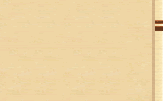|  |
|
| |
 |
 |
Home > Lifestyles > TCM's role in health maintenance and promotion
> Cold and Flu in Chinese Medicine > TCM Folk Remedies for Cold and Flu |
 |
 |
 |
|
| |
TCM Folk Remedies for Cold and Flu
|
In addition to the formalized practice in TCM, Chinese people may use folk remedies. These remedies are applied to a wide variety of aliments and may be used for general health maintenance as well.
Because colds and flu are usually self-limiting, certain remedies are likely to shorten their course and help alleviate associated symptoms.
|
1. Wind-Heat Type Cold and Flu
|
Foods like peppermint, chrysanthemum, Chinese box thorn, mung beans, lotus leaves, olives, Chinese spinach and spinach are recommended. They are cold or cool in properties, which help to relieve heat symptoms.
- Chrysanthemum and peppermint tea: Boil the chrysanthemum (6g) with 400ml of water. When brought to a boil, add in peppermint (3g) and crystal sugar (15g), boil for 2-3 minutes. Take the hot tea twice a day. It helps to relieve symptoms like sore throat, nasal congestion, headache and fever that occur in "heat" type flu.
|
 Chrysanthemum tea is suitable for wind-heat infection. Chrysanthemum tea is suitable for wind-heat infection. |
|
2. Wind-Cold Type Cold and Flu
|
Foods like ginger, onion, garlic, green spring onion, fermented soybean and coriander are encouraged for consumption. They have pungent and hot properties, which help to expel evils located in the exterior level.
- Ginger tea: Clean and shred fresh ginger (15g). Make into tea with 200 ml boiling water. Add brown sugar (12g) to taste. Serve hot twice daily. After taking it, go to bed and cover the body properly to let it perspire. This tea expels the evils and promotes appetite, which is applicable to wind-cold type flu.
- Furthermore, in the early stages of the wind-cold type, one can also prepare a big bowl of a hot Ephedra (6-9g) decoction for deep breathing in its steam until it is cool for symptom relief .
|
 Ginger tea is suitable for wind-cold infection. Ginger tea is suitable for wind-cold infection. |
|
3. Other types of cold and flu:
|
Foods like watermelon, wax gourd, loofah, cucumber and bitter melon are recommended during summer. These foods, which are harvested in this season, help counteract symptoms associated with summer and damp-heat evils .
|
4.Treatment remedies for either wind cold or heat-cold evils
|
Some massage techniques on selected acupoints may help ease symptoms of general flu symptoms; because, the following techniques enhance the meridians' qi and blood flow in the head, neck, shoulder and chest areas. Massage needs to be applied with firm and forceful pressure. (See graphics for acupoint locations.)
|
- Rub the forehead from the middle to the two sides 10 times;
- Knead tai-yang10 times;
- Rub the temple separately, 10 times;
- Knead feng-chi 10 times;
- Grasp the posterior neck 10 times;
- Thump jian-ging 10 times;
- Pat the upper back 10 times;
- Nip and knead the he-gu 10 times.
|
|
|
|
Acupoints for common cold and flu. |
|
For individuals with a stuffy and runny nose, knead ying-xiang and rub the nose by hand, 10 times additionally.
For individuals with swelling throat and a sore throat, knead under the chin bone and pinch shao-shang, 10 times additionally.
For individuals with severe cough, knead the fei-shu, tian-tu and tan-zhong respectively, 10 times additionally.
|
|
General Prevention of Cold and Flu
Generally, tonic herbs like Cordyceps and medicinal mushrooms such as lingzhi and yunzhi promote a healthy body constitution. These herbs may be consumed as foods in dishes like soups or be taken as general health supplements found in your local drugstores. It is advisable to consume them daily for prevention purposes during the prevalent cold and flu seasons in your area.
Another folk remedy for prevention involves a smoking technique. During epidemic seasons, dried aromatic herbs such as Atractylodes root, artemisia or mulberry leaves can be used to smoke the house and prevent evil qi invasion. Choose one of the above herbs (approximate 5g/10m 2) to light up like incense. Close all the windows and doors, keep the vapor/smoke indoors for 15-20 minutes, and then open the windows and doors in order to refresh the air.
|
References
| 1. |
Zhang Enqin (Chief ed.) Chinese Medicated Diet by Publishing House of Shanghai University of Traditional Chinese Medicine. |
| 2. |
Chen Rong et al, Internal Medicine of TCM - Essential Notes for Examination by Publishing House of Shanghai TCM University. |
| 3. |
Dan Bensky & Randall Barolet, Chinese Herbal Medicine Formulas & Strategies by Eastland Press. |
| 4. |
Duan Fujin (Chief ed.), Prescriptions of TCM by Shanghai Science and Technology Publishing House. |
| 5. |
Zhao Ruling (Chief ed.), Proven & Folk Remedies for Common Diseases by Publishing House of China Construction Industry. |
| |
|
| Written By: |
| Angelo Chung, B Pharm., Integrated Chinese Medicine Holdings Ltd. |
| Rose Tse, Integrated Chinese Medicine Holdings Ltd. |
| |
| Editors: |
| Angela Collingwood, MSN, Integrated Chinese Medicine Holdings Ltd. |
| Rose Tse, Integrated Chinese Medicine Holdings Ltd. |
| |
| Special thanks to Elpidio Talens Juan for helping with article graphics. |
|
|
|
|
 |
|
|
 |


